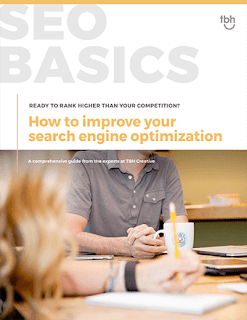
Now, more than ever, the digital world waits for no one. In 2016, mobile internet use first surpassed desktop, and this global trend in web usage will only continue to increase. Just look at Africa: the continent isn’t just mobile-first; it’s “mobile-only.”
At the beginning of 2018, Google rolled out mobile-first search engine indexing, marking the start of the tech giant’s push to encourage everyone to start embracing a mobile-first perspective.
At the beginning of 2018, Google rolled out mobile-first search engine indexing, marking the start of the tech giant’s push to encourage everyone to start embracing a mobile-first perspective.
Responsive web design and mobile search optimization are no longer just options or “nice-to-haves.” If your company wants to maintain a competitive edge online, mobile-first design is a necessity.
In this article, I’ll explore what mobile-first indexing is, how it works, and what you need to do to prepare your website for mobile-first indexing, and what you need to know about SEO in 2019.
This article is part of the Complete Guide to Improving your Search Engine Optimization.
What is a mobile-first index?
With mobile-first indexing, Google now crawls every website’s mobile web pages to establish its search engine rankings before it crawls desktop web pages.This is a complete switch from the way Google has treated websites in the past. Previously, many considered the desktop version of a website as its primary version, but Google’s update means no one can think this way any longer and expect to remain competitive online or see the results they used to get.
Mobile-first, not mobile-only
Google is encouraging site owners to make their websites mobile-friendly with this movement. But, mobile-first indexing does not mean mobile-only indexing (unless, of course, you’re a company who only does business with consumers in Africa).If you don’t have a responsive or mobile version of your website, it will still be included in Google’s index. Google will continue to crawl desktop versions of websites in the absence of mobile sites, but search engine ranking may suffer.
If you have separate URLs for mobile and desktop, mobile users will see the mobile URL and desktop users will see the desktop URL, but your overall ranking will be determined by the content on your mobile site.
On requirements: Neither mobile-friendliness nor a mobile-responsive layout are requirements for mobile-first indexing. Pages without mobile versions still work on mobile, and are usable for indexing. That said, it’s about time to move from desktop-only and embrace mobile 🙂— Google Webmasters (@googlewmc) June 14, 2018
Mobile-first indexing is already underway
When Google launched its mobile-first indexing initiative, they have started by indexing websites that are already following mobile best practice, with the plan to add more websites to their index using mobile-first as time goes on.Not wanting to surprise anyone with this new mobile-first strategy, Google webmasters continue to share news, announcements, and clarifications about mobile-first indexing.
For instance, Google webmaster trends analyst Gary Illyes reported that it will likely take a few years until the Google index is entirely mobile-first. As websites start being indexed mobile-first, their owners are being notified on Google Search Console.
What mobile-first indexing means for your website
Now is the time to start revamping your website for mobile SEO. As Google continues its gradual introduction of mobile-first indexing, websites that do not have mobile-friendly versions may begin to see their search engine rankings slip.Essentially, you should start thinking of the mobile version of your site as the “primary version.” If your content is optimized for mobile and your site is responsive, you shouldn’t experience any significant changes.
Find out how well your website scores on Google’s instant mobile-friendly test
How mobile-first indexing will affect SEO in 2019
To prepare for mobile-first indexing and preserve (or even improve) your current search engine rankings, make sure that the mobile version of your website is the best version of your site. Whether your mobile website is separate from your desktop site, or you have one fully-responsive site, soon the mobile version will be the one that matters most.Follow mobile search indexing best practices outlined by Google, and build your website with high-quality content, accurate meta tags and descriptions, and clean markup.
Improve your mobile site for SEO
In the end, your website (both desktop and mobile) should be search-engine optimized with your target audience in mind. SEO goes far beyond simply achieving the number one position on Google. It’s about delivering your content to the people that want it, when and where they need to see it.Understand your target audience and focus on developing high-quality content that is useful. Include content that is easily accessible for potential customers in all stages of your buyer journey, creating content hubs with resources to connect users to your content.
What to do about mobile-first indexing now
Now that you have a clearer grasp of what mobile-first indexing is and how it will affect your website and SEO in 2019, what steps can you take to get ready?Here’s how to make your website mobile-first index ready:
1. Redesign and recode to create a responsive website, if you have a separate mobile site.
2. Recode and create a mobile version of your site, if you don’t have one.
Remember: While sites without a mobile version will still be indexed in results, mobile-friendly websites that are crawled by Google will have a better chance to rank higher.
3. Optimize the mobile version of your website, and perform a mobile site assessment to check user-friendliness.
4. Click through your mobile site and make sure users find what they need easily on small screen sizes. Don’t forget to test different devices, including at least one or two with a smaller screen size.
5. Evaluate your content and metadata. Check that metadata is present for both versions of your website. Also make sure that your content on both sites is the same.
Tip: While the arrangement and layout of the mobile vs. desktop content will appear different, you need it to all to be available.
6. Test your site for mobile crashes. Your mobile site’s crawl rate might increase with these changes so plan for an equivalent level of hosting capacity. Compressing images properly is one easy step to take to support minimize crash risks.
Is your website coded to take advantage of Google’s shift to a mobile-first index? If you need help, TBH Creative can help you assess where you are today and what you need to do to optimize your company’s website for the best results in this ever-changing mobile-first world.

Get your copy of the complete guide to SEO and discover what you can do today to improve your website’s search engine optimization.
Download now
Download now
